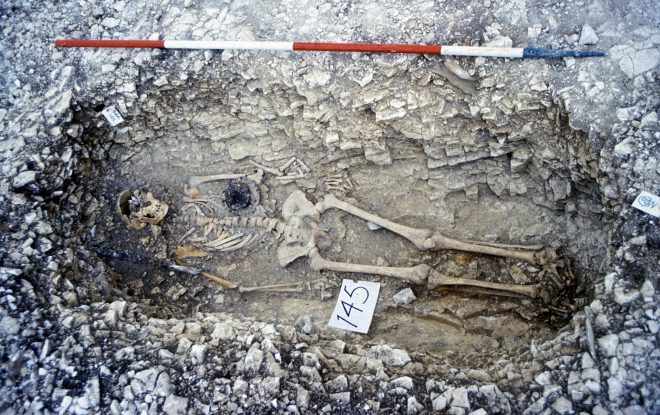Unravelling the mystery of medieval cemetery in South Downs
November 8, 2022

DNA analysis of Saxon skeletons, including some found in the South Downs, has shone a light on medieval migrations to post-Roman Britain and how local culture was affected.
Researchers have been analysing over 400 individuals from ancient Britain and Europe, including bones found at a Saxon cemetery at Apple Down, near Up Marden, West Sussex.
The cemetery was discovered in the 1980s and the collection is currently held at The Novium, in Chichester. The different burial practices between graves at the same cemetery has posed questions for archaeologists ever since and this new DNA study has finally provided some answers.
The genetic results revealed that around 75 percent of the population in Eastern and Southern England was made up of families whose ancestors must have originated from continental regions bordering the North Sea, including the Netherlands, Germany and Denmark. What is more, these families mixed with Britain’s existing population, but importantly, this integration varied from community to community.
The study revealed that women from migrating populations were buried with artefacts more often than women of local origin, especially considering items such as brooches and beads.
Duncan Sayer, archaeologist from the University of Central Lancashire and a lead author of the study, said: “We see considerable variation in how this migration affected communities. In some places, we see clear signs of active integration between locals and immigrants, as in the case of Buckland near Dover, or Oakington in Cambridgeshire. Yet in other cases, like Apple Down in West Sussex, we see that people with immigrant and local ancestry were buried separately in the cemetery. Perhaps this is evidence of some degree of social separation at this site.”
Amy Roberts, Collections Officer at The Novium, said: “Since the Apple Down cemetery was first discovered in the 1980s archaeologists and academics have continued to question why such different burial practices were used across the cemetery, particularly grave orientation and the inclusion, or not, of grave goods, and what these things can tell us, if anything, about the people buried there. To be in a position to answer some of these questions through up to date ancient DNA and genetic study is fascinating and really does highlight just how important retention of these wonderful archives is.”
